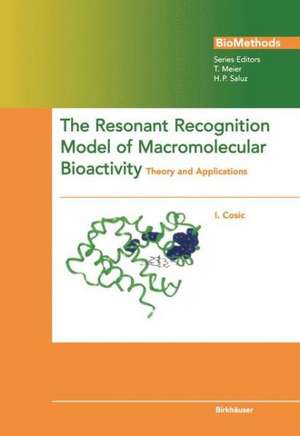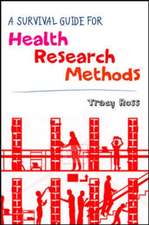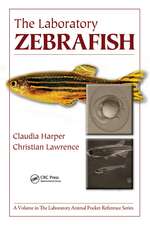The Resonant Recognition Model of Macromolecular Bioactivity: Theory and Applications: Biomethods
Editat de Irena Cosicen Limba Engleză Paperback – 26 noi 2012
Preț: 634.82 lei
Preț vechi: 746.84 lei
-15% Nou
Puncte Express: 952
Preț estimativ în valută:
121.49€ • 131.92$ • 102.05£
121.49€ • 131.92$ • 102.05£
Carte tipărită la comandă
Livrare economică 22 aprilie-06 mai
Preluare comenzi: 021 569.72.76
Specificații
ISBN-13: 9783034874779
ISBN-10: 3034874774
Pagini: 160
Ilustrații: XII, 148 p. 118 illus., 4 illus. in color.
Greutate: 0.26 kg
Ediția:Softcover reprint of the original 1st ed. 1997
Editura: Birkhäuser Basel
Colecția Birkhäuser
Seria Biomethods
Locul publicării:Basel, Switzerland
ISBN-10: 3034874774
Pagini: 160
Ilustrații: XII, 148 p. 118 illus., 4 illus. in color.
Greutate: 0.26 kg
Ediția:Softcover reprint of the original 1st ed. 1997
Editura: Birkhäuser Basel
Colecția Birkhäuser
Seria Biomethods
Locul publicării:Basel, Switzerland
Public țintă
ResearchCuprins
1 Introduction.- 1.1 Structure-function relationships in proteins and DNA: definition of the problem.- 1.2 Existing approaches and their limitations.- 1.3 Novelty of the RRM model.- 1.4 Applications of the RRM.- 2 RRM Basic Concepts.- 2.1 Definition of macromolecular functional characteristics: characteristic frequency.- 2.2 Problems in FFT calculations within the RRM.- 3 The Physical Meaning of the RRM.- 3.1 Charge transfer through the protein backbone.- 3.2 Correlation of the RRM characteristic frequency with absorption spectra of light-absorbing proteins.- 3.3 Correlation of RRM characteristic frequency with low-intensity light effects on cell proliferation.- 3.4 Correlation between predicted and measured characteristic frequency of chymotrypsin activation.- 3.5 Photoreceptors with similar structures but different absorptions can be distinguished using the RRM.- 3.6 Frequency range of macromolecular interactions.- 4 Relation Between the RRM and 3D Protein Structures.- 4.1 Definition of “hot spots” in terms of the RRM.- 4.2 Example of heme-containing proteins.- 4.3 Discussion.- 5 Prediction of Functionally Active Sites and Functional Mutations.- 5.1 Hot spot predictions in DNA: example of the SV40 enhancer.- 5.2 Hot spot predictions in proteins: example of IL-2.- 5.3 Hot spot predictions in EGF.- 5.4 Active site prediction: example of protease-protease inhibitor interactions.- 5.5 Oncogenes and their activity: example of ras proteins.- 5.6 Definition of sequence function.- 6 Protein Interactions.- 6.1 Protein-protein interactions: frequency requirements.- 6.2 Protein-protein interactions: phase requirements.- 6.3 Protein-DNA interactions.- 7 Bioactive Peptide Design.- 7.1 Procedures: example of design of glucagon analogues.- 7.2 NGF analogue design and possibleapplications.- 7.3 Design of FGF analogues and application in limiting solid tumour growth.- 7.4 HIV-related peptides that mimic HIV immunogenicity.- 7.5 Activity of HIV-1-inhibiting peptides.- 7.6 New concept of HIV activity.- 8 Conclusions.- 8.1 New concept in molecular biology, new point of view.- 8.2 Advances in theory: macromolecular physics.- 8.3 Advances in molecular biology; design of new pharmaceuticals.- References.


















